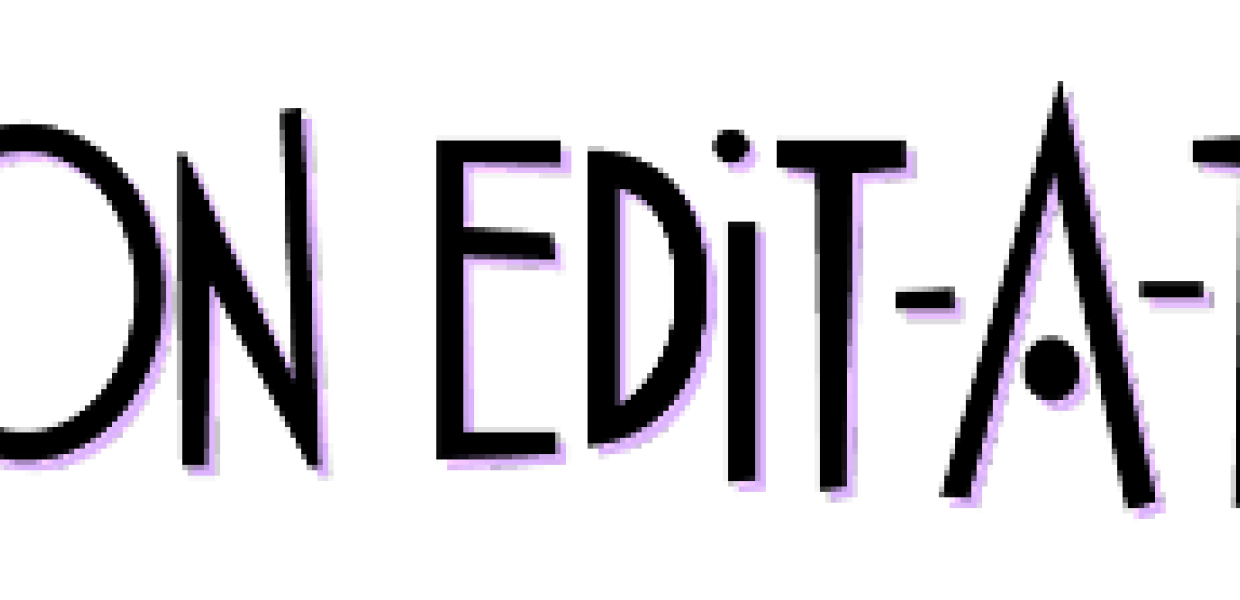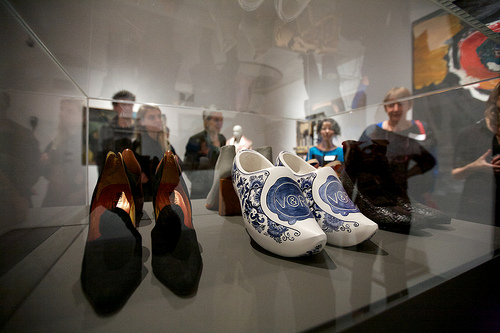Fashion in the library: Encounters with Wikipedians of a GLAM kind

This extended guest blog is by Erwin Verbruggen from the Netherlands Institute for Sound and Vision.
The Europeana Fashion project is organising a number of Wikipedia editathons about fashion. In the process, we’ve been learning about how museums can benefit from working with the Wikipedia community. Organising the editathons has shown us how we can get people to come down to our libraries to share knowledge and taught us the differences between the Wikimedia and the GLAM (galleries, libraries, museums and archives) ways of working.
Fashionable edit-a-thons

In the Europeana Fashion project, the Netherlands Institute for Sound and Vision coordinates a series of Wikipedia 'editathons'. An editathon is a scheduled time where people edit Wikipedia together, whether offline, online, or a mix of both; typically focused on a specific topic.[1] Editathons improve the encyclopedia and can be a great way to teach people how to edit on Wikipedia. The aim of our editathon series is to provide a historical context for the materials that the 19 museums and private fashion archives contribute to Europeana Fashion. They also boost knowledge about fashion history on Wikipedia by adding new and improving incomplete articles. The collaboration with Wikipedia is a meaningful way to promote Europeana Fashion. They improve public knowledge about fashion history on Wikipedia, offer context to the beautiful materials Europeana Fashion brings online and connect different communities around a shared passion.

Editathon in Stockholm, picture by Erwin Verbruggen, Europeana Fashion, CC-BY-SA
In comparison to its cultural importance, there are not that many articles on the topic of fashion on the English-language Wikipedia. When the Europeana Fashion project started, there were about 3,886 articles, most of which were of 'Start Class' or 'Stub Class' quality. [2] Most fashion articles on Wikipedia are of specialist interest - there were only 37 articles that were deemed as must-have topics to be included in an encyclopedia. Most of the incomplete fashion articles on Wikipedia cover topics of top importance - like Coco Chanel or the profession of modelling. Some fashion articles are not tagged, which makes them very difficult to find. Furthermore, some topic descriptions definitely need to be extended as they do not constitute even the minimal knowledge on the topic and many articles about specific fashion brands, fashion icons or fashion magazines do not exist yet. The conclusion from this analysis was that the Europeana Fashion project had a lot of ground to cover and our efforts could provide a great boost to improving the presence of fashion knowledge in the world’s free encyclopedia. Not only in the English language!

Editathon Utrecht, pciture by Sebastiaan ter Burg, Europeana Fashion, CC-BY-SA
Bringing out collections
Bringing people together to share knowledge and write together is wonderful. But where the power of Europeana Fashion comes out is in the marvellous collections we are bringing online. The editathons are an excellent opportunity to make use of this content and knowledge and use it to illustrate the articles, improve on existing ones or spawn new article ideas. All the images, sounds and videos used on Wikipedia come from the Wikimedia Commons platform: a database of 17,690,872 freely usable media files to which anyone can contribute. Europeana Fashion is growing a collection of images and videos from its content providers on Wikimedia Commons so that participants can easily find them during the events.
All content on Wikimedia Commons needs to be either in the public domain or available under a ‘free culture’ licence. By organising these editathons, the participating curators are talking to their management about how many materials they could make available this way. From our experience, it is important to think big - by starting small. Organisations who find it difficult to begin can select 5 images to run through the process. The easiest step here is to start with Public Domain material or material for which the institutions own the copyright. Many projects in the Europeana Network have written extensive reports about researching and realising correct use of copyrighted or out-of-copyright items, such as the ECLAP report on IPR for the performing arts. The Europeana Fashion report on IPR bundles best practices for the fashion heritage sector and will be published after the summer - keep an eye on the Europeana Fashion channels to stay up-to-date. Once images are starting to be used to illustrate or exemplify topics on Wikipedia, it’s exciting to follow how quickly these items gain attention in different languages.
Connecting knowledge realms
The second strength of the Europeana Fashion project is that it can introduce fashion experts to the Wikimedia community. Traditionally, there’s little overlap between the ambitious volunteers who intend to amass the world’s knowledge and the fashion industry, fashion GLAM community and those with a general interest in fashion. Differences between these two fields can be felt - and overcome - by joining forces. Not all Wikimedia volunteers are fond of paid professionals meddling with Wikipedia. Sometimes, volunteers disagree heavily on the cultural value of dress-related topics. Much has been written, for example, about Kate Middleton’s wedding dress and how it does or does not prove a valid topic for Wikipedia. Museums like to closely monitor knowledge management and communication. Wikimedia volunteers embrace a culture of open communication and collaboration on all levels. The open nature can be challenging to curators with highly specialised knowledge. The invitation to correct erroneous details or careless wording by enthusiastic amateur fashion historians can seem like an extra workload to take on. Some cultural institutions have embraced this collaboration by inviting a Wikipedian in residence who can bridge the gap between these two - so closely affiliated - realms.
Luckily, our events have a number of positive outcomes. GLAM representatives get a first-row insight into the machinery of Wikipedia. Collaborating with local museums has the wonderful effect that Wikimedians learn about the values of a museum or archive and the various levels of expertise that exist in, what is for them, an unfamiliar field.
Onwards and upwards with the arts
In the coming two years, Europeana Fashion will be expanding its collaboration with the Wikipedia community. Together with our colleagues from Europeana Awareness, we are planning to host events in Antwerp, Venice, Vienna, London and Lisbon. Meanwhile, we’re working on a handbook for GLAMs with more hints and tips for organising editathons around the globe, which is expected to be released after the summer. If you’re inspired and would like to contribute materials to the Europeana Fashion collection on Commons, or would like to host an editathon, do get in touch via [email protected].
.png)
Links & more information
Read more about the editathons Europeana Fashion and Europeana Awareness have organised until now:
- Blog post on the Utrecht editathon
- Blog post on the Stockholm editathon
Find fashion-related articles on Wikipedia:
- On Wikiproject Fashion you will find more information on the classes/importance of current fashion articles
- English-language Wikipedia fashion portal
- Dutch-language Wikipedia fashion portal
Wikipedia’s resources on organising edit-a-thons:
- Wikipedia: How to run an editathon
- Wikimedia: Editathon How-to
- More tips on library edit-a-thons
- General Wikipedia resources:
- Beginners’ Guide to Wikipedia (account creation, article editing)
- Five Pillars of Wikipedia
Footnotes
[1] Wikipedia: How to run an edit-a-thon. (2013, July 11). In Wikipedia, the free encyclopedia.
[2] Start class is Wikipedia speak for an incomplete article that needs reliable sources. Stub class quality means that an article consists of a very basic description of the topic.
Tweet !function(d,s,id){var js,fjs=d.getElementsByTagName(s)[0];if(!d.getElementById(id)){js=d.createElement(s);js.id=id;js.src="http://pro.europeana.eu//platform.twitter.com/widgets.js";fjs.parentNode.insertBefore(js,fjs);}}(document,"script","twitter-wjs");Follow @EuropeanaEU !function(d,s,id){var js,fjs=d.getElementsByTagName(s)[0];if(!d.getElementById(id)){js=d.createElement(s);js.id=id;js.src="http://pro.europeana.eu//platform.twitter.com/widgets.js";fjs.parentNode.insertBefore(js,fjs);}}(document,"script","twitter-wjs");
